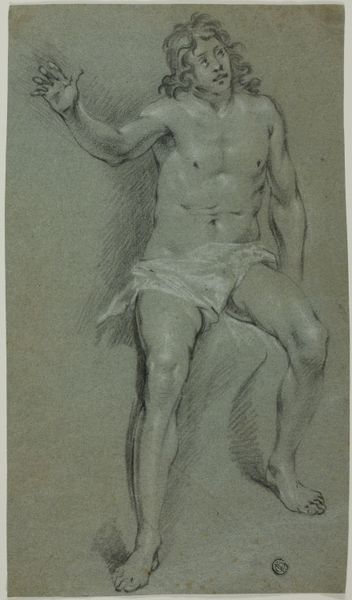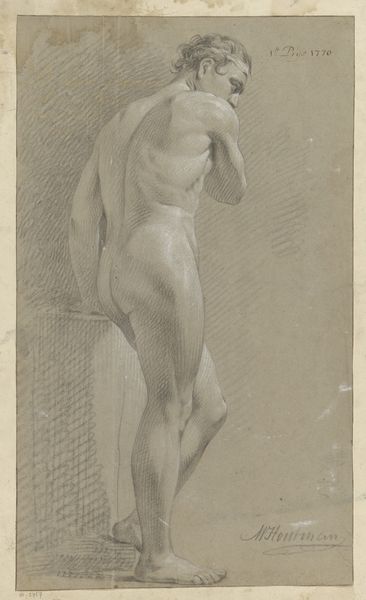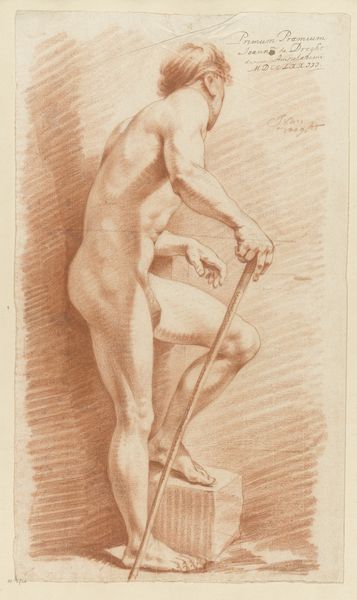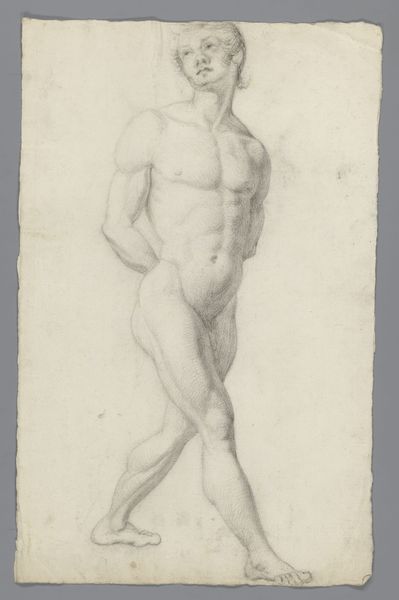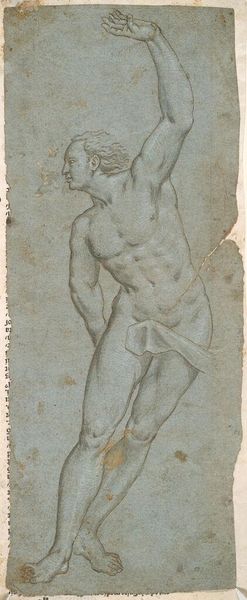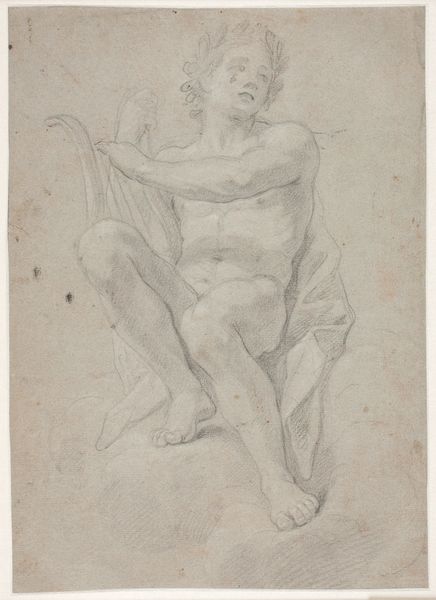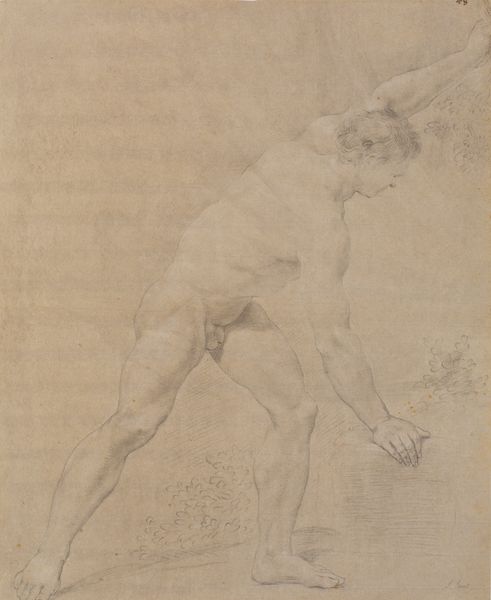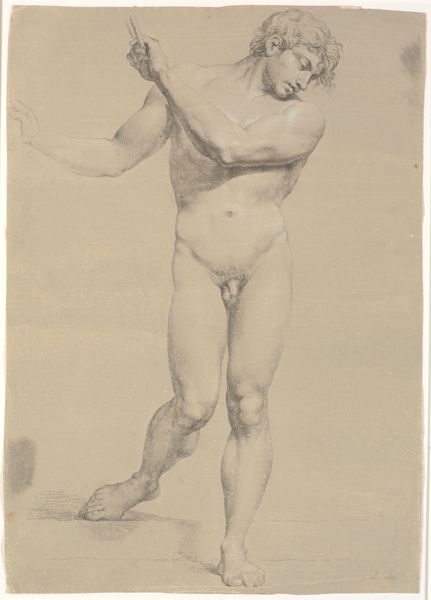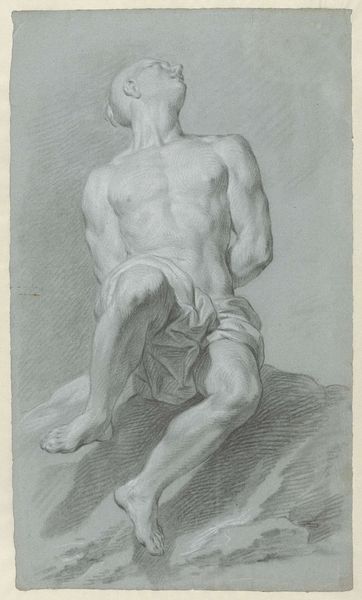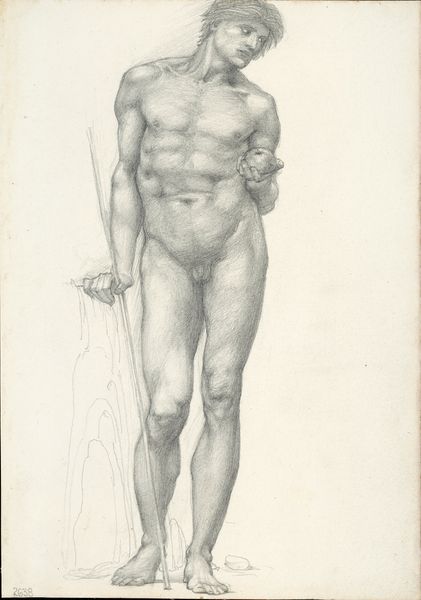
drawing, pen
#
portrait
#
drawing
#
baroque
#
pencil sketch
#
figuration
#
pen
#
italian-renaissance
Copyright: Public domain
Giovanni Battista Gaulli created this study of a dancing youth with pencil and wash in the late 17th century. Gaulli, working in baroque Rome, was associated with the Jesuit order, and he frequently produced work of religious and historical subjects. Here, the image creates meaning through its idealized, classical figure, a representation of youth and beauty, caught in a moment of performative action. Italy at this time was a place of strong patronage, particularly from the church. Gaulli’s association with the Jesuits would certainly have shaped his artistic production and career. The church was a prominent patron during this time and would certainly have had an influence on the artist’s aesthetic. Understanding the history of these institutions, such as the Jesuit order, and researching their influence on the artwork’s creation, is essential to interpreting the image. This understanding emphasizes that art's meaning is always dependent on its social and institutional context.
Comments
No comments
Be the first to comment and join the conversation on the ultimate creative platform.
